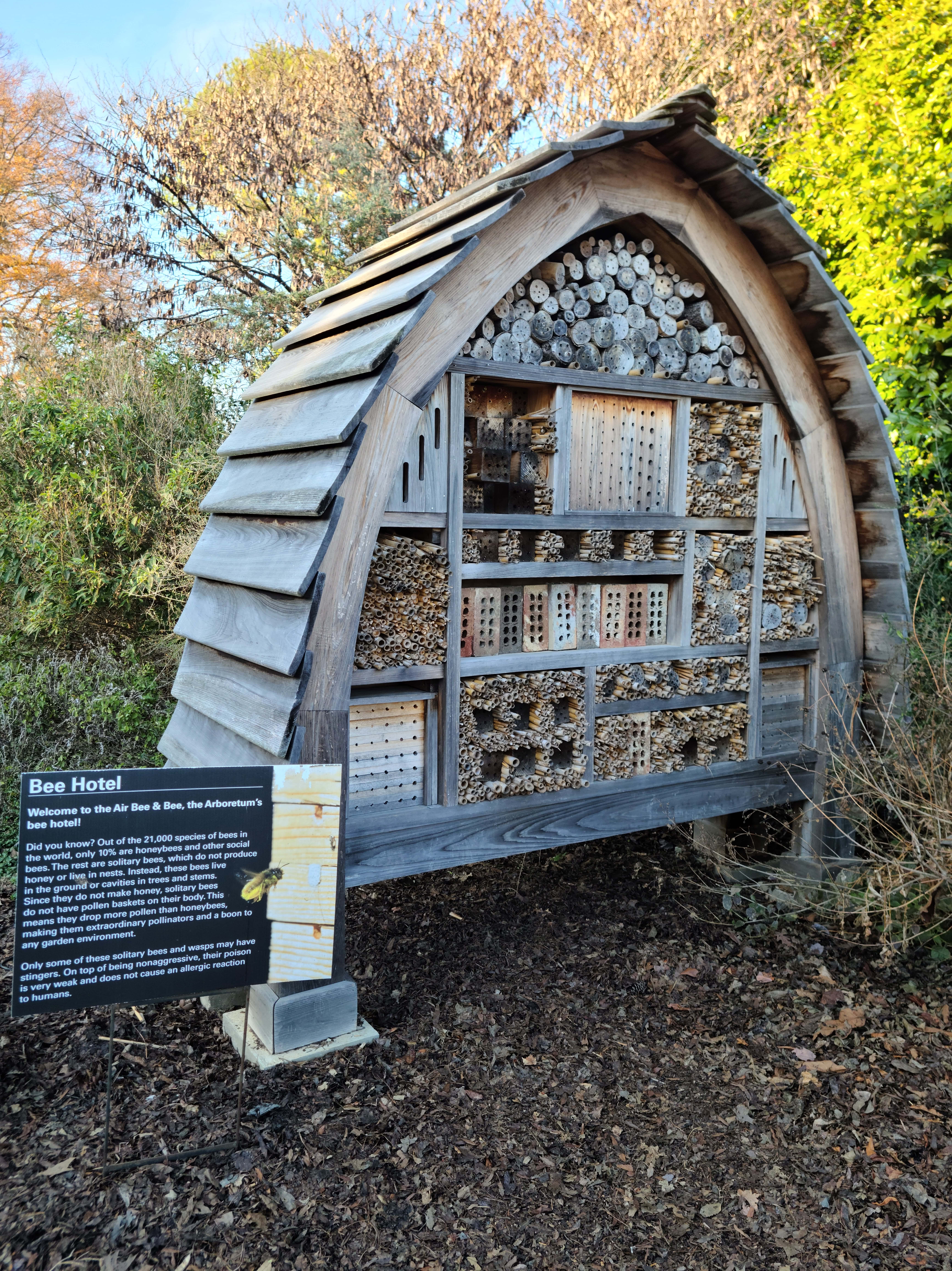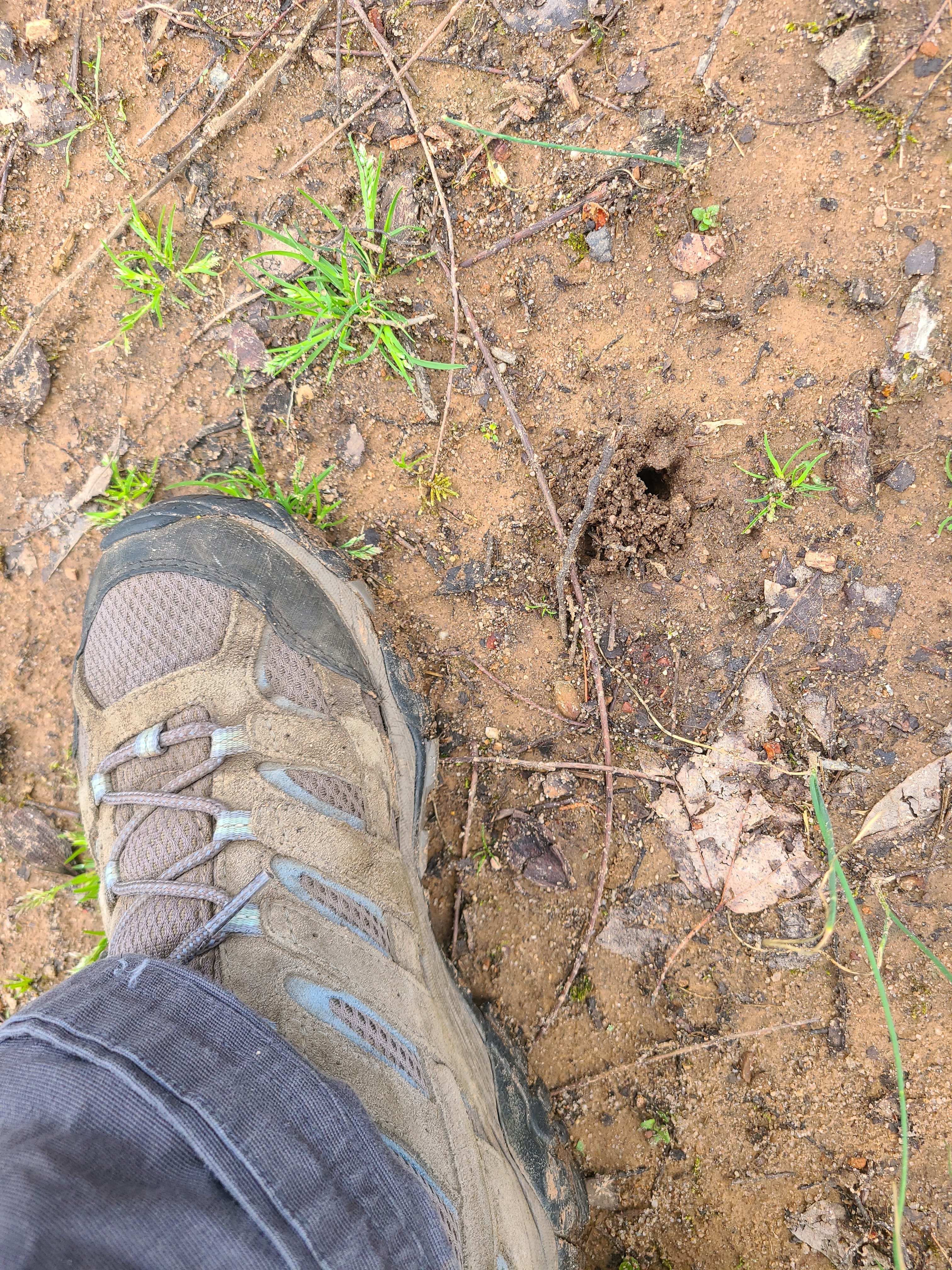Holes in Your Yard Could Be Ground-Nesting Bees
go.ncsu.edu/readext?923080
en Español / em Português
El inglés es el idioma de control de esta página. En la medida en que haya algún conflicto entre la traducción al inglés y la traducción, el inglés prevalece.
Al hacer clic en el enlace de traducción se activa un servicio de traducción gratuito para convertir la página al español. Al igual que con cualquier traducción por Internet, la conversión no es sensible al contexto y puede que no traduzca el texto en su significado original. NC State Extension no garantiza la exactitud del texto traducido. Por favor, tenga en cuenta que algunas aplicaciones y/o servicios pueden no funcionar como se espera cuando se traducen.
Português
Inglês é o idioma de controle desta página. Na medida que haja algum conflito entre o texto original em Inglês e a tradução, o Inglês prevalece.
Ao clicar no link de tradução, um serviço gratuito de tradução será ativado para converter a página para o Português. Como em qualquer tradução pela internet, a conversão não é sensivel ao contexto e pode não ocorrer a tradução para o significado orginal. O serviço de Extensão da Carolina do Norte (NC State Extension) não garante a exatidão do texto traduzido. Por favor, observe que algumas funções ou serviços podem não funcionar como esperado após a tradução.
English
English is the controlling language of this page. To the extent there is any conflict between the English text and the translation, English controls.
Clicking on the translation link activates a free translation service to convert the page to Spanish. As with any Internet translation, the conversion is not context-sensitive and may not translate the text to its original meaning. NC State Extension does not guarantee the accuracy of the translated text. Please note that some applications and/or services may not function as expected when translated.
Collapse ▲Spring has come early this year and the ground temperatures are warming up with every day. This is a signal to many insects to become active and start foraging for the season. North Carolina is home to more than 500 native bee species and almost 90 percent of them nest in the ground! At the Cooperative Extension Office in Lee County, we received a handful of calls a month about “holes” in folk’s yards where large numbers of bee burrows are congregated together. There is nothing to worry about and you don’t need to do anything! There are bee’s living in your soil, and this is normal and good!
Family Tree
Bees are in the Order Hymenoptera, along with ants and wasps, and scientists usually consider the superfamily Aculeata where most “bees” are located in the family tree. Bee identification in the field can be challenging to even the most seasoned entomologist. Bees are active and can move before all the necessary characteristics, like hairs, vein patterns and leg shapes, are observed. But, entomologists have learned bee behavior through observation and can make educated guesses based on their habits!
North Carolina is home to about 130 species in the family Andrenidae, which is most likely what is starting to emerge from the ground in large aggregations now. Species in the genus Andrena start to become active in February and March, while the species in the genus Calliopsis become active in May and June.
Preferred Habitat
Most bee species nest in the ground, but it is usually bees that nest in logs and stems that get all the press. We leave our stems in the garden for bees to nest in, build hives for honey bees to colonize, and bee hotels in hopes that stem- and long-

The bee hotel at the JC Raulston Arboretum at NC State University has been designed to try to attract many species and sizes of bees. Bee hotels can be attractive and make it seem like most bees nest in house-like structures, but most bees nest in the ground! All habitat types are critical for bee conservation. Photo by Amanda Wilkins
nesters will move in. Yet, bare ground where humans have left it alone and the sun can warm the soil is where some of the most important bees will make a home.
Even though the holes are all grouped together the bees themselves are solitary. This means each hole is home to one insect. Females will mate, make a nest in the ground, pack it with pollen and resin, lay her eggs and die. She will not see her offspring. Why they group together is not totally understood, but is hypothesized to be for protection and taking advantage of ideal habitat.
What we can do as land managers is consider intentionally leaving bare ground areas on our property for ground-nesting insects. Observe these areas in the spring and try not to drive heavy machinery over them, especially if you see the tell-tale signs of soil piles next to holes! These bees are not going to swarm and attack, and would prefer to go about their business for their short lives. What perceived aggressive behavior might be a bee just checking you out as you near their nest.
But what about flowers?
Flowers are still critical to these ground-nesting bees, and vice versa! Members of the family Andrenidae are some of the earliest emerging bees in the late winter and

A tell-tale hole from a ground-nesting bee with a boot for size comparison. This hole was found in a pecan orchard in western Lee County. Photo by Amanda Wilkins
are important for pollinating early flowering species, like our favorite fruit trees! Most bees need both nectar and pollen, and many of them prefer certain species of groups of plants (these are called specialists). Nectar and pollen feed the adult insects, and the pollen is gathered and sometimes combined with other materials to make a bread-like food used to feed the young insects.
Insects of many kinds have been critical pollinators for millions of years, and as humans we sometimes lose sight of the importance of a diversity of habitat types. We delight when we see bees visiting our gardens, but rarely consider where they live when we don’t see them. Humans have been managing honeybees for thousands of years and most modern Americans assume the non-native honeybee, with its social colony and tidy beehive, is what most bees are like. This could not be farther from the truth. As we move into the future, it is critical we consider how unused, untraveled parts of our property could already be home to our favorite pollinators!
Resources:
How to Manage a Successful Bee Hotel
iNaturalist Data on the Genus Andrena
More Reading- The Bees in Your Backyard, by Wilson and Carril




